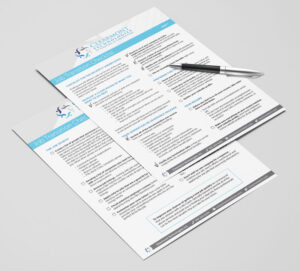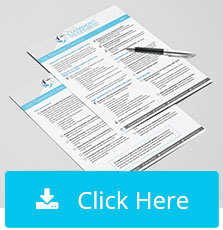Recently lost your job?
Download our free “Job Transition Checklist” to stay on top of everything you should do as you move into the next step of your career.
Finding yourself without a job can be one of the most unsettling and anxiety-provoking times in your life. Take a deep breath and use our handy checklist to stay on top of everything you should do as you move into the next step in your career.

Develop a clear vision of what you want to do next
- Take a notebook and pen or grab your computer and write out the following:
- What you loved about your job
- What you did not like about your job
- Have you considered a career change?
- What role would you like to see yourself in for your next job
- What are your strengths you can bring to a new company?
- What are your weaknesses? What can you do to improve these areas?
Getting clear on this will allow you to reposition yourself as you present yourself to potential new employers.
Your Separation or Severance Package
- Review all of the documentation you receive from your employer carefully, including:
- Severance pay
- Unpaid bonuses or commission
- Unused vacation time or PTO
- Health insurance options
- Retirement Accounts
- Gather all pertinent account information, such as account numbers and passwords for your health benefits, life insurance, retirement accounts, and other benefit plans.
- Clarify your termination date so that you can be ready to file for unemployment benefits.
- Check to see if your company provides outplacement services. These services provide help with updating your resume, searching for jobs, training on how to interview.
- Request a letter of recommendation from your current manager, as well as copies of any performance reviews.
- Update your email address for benefit providers to ensure you are receiving important communication from them.
- File for Unemployment Benefits right away.
Preparing for the Search
- Check yourself on Google. Search your name and see what comes up. If you have anything that you would not want a new employer to see, take the necessary steps to remove that information.
- Check your social media. Are your posts appropriate for a new employer to see? Many employers now make a practice of checking potential hires social media accounts. Clean these up and check your privacy settings.
- Update your LinkedIn profile.
Your Resume
- Before you start to re-do your resume, take some time to write down:
- Your job skills and any accomplishments at this job.
- Do you have any measurable accomplishments that resulted in saving your employer money or bringing in larger sales, revenues, customers, or accounts?
- Make sure everything on your resume matches your LinkedIn profile, since most employers review LinkedIn profiles for all job applicants.
The job search
- Create a list of people that you know in the industry to reach out to for help in finding a new job. Many times having a personal connection is the difference between who gets an offer and who does not. Add to this list people NOT in the industry you work in, but people that know you well and would be able to connect you to others that could help you. What other groups are you involved in?
- Community based organizations
- Religious groups
- Sports programs
- Alumni network
- PTA, Book Clubs, Scholastic groups
- Develop a list of companies you want to connect with and reach out directly to hiring managers in these organizations.
- Review job listings, starting with job search engines like Indeed.com, CareerBuilder.com, Glassdoor.com for a better variety of open job listings.
- Apply only to jobs that are a good fit for you. Job hunting can be an exhausting job in itself. Use your energy wisely.
- Check potential employer’s reviews before applying using sites like Glassdoor.com.
- Customize your cover letter! Your cover letter should be tailored to every job you apply to and provide clear, compelling reasons why you are the perfect fit for the job.
Before the Interviews
- Compare salaries in the field for the positions that you are applying for. Know in advance what the average salary range is and what you can afford to accept. Be ready to negotiate on this and don’t take less than you’re comfortable with. Payscale.com is a great resource for comparing salaries.
- Have your interview outfits ready. Many initial interviews are done over the phone or video conference. You still need to look professional in a video interview. In any interview you do, remember that first impressions matter. The person you’re meeting with should feel that you have put your best effort into presenting yourself as a professional that wants to join their team.
- Review common interview questions so that you’re ready to answer any questions presented to you.
- Be ready to answer questions about why you left your previous employer.
After you begin applying for jobs
- Be patient.
- Many companies will not respond at all to your application. This is not unusual.
- Be prepared for multiple interviews with one company before they make a decision on who to hire.
- Don’t wait on one company for a response – continue your job search efforts, reaching out and applying for any jobs that you’re truly interested in.
To improve your chances of getting a new job quickly we recommend that you connect with a Job Coach such as Bonnie Brill. Specially trained to provide all of the above services and assist you in finding your ideal job, these professionals can be the most valuable step you take for your future.

Recently lost your job?
Download our free “Job Transition Checklist” to stay on top of everything you should do as you move into the next step of your career.
You will also be subscribed to our Job Seeker community.

